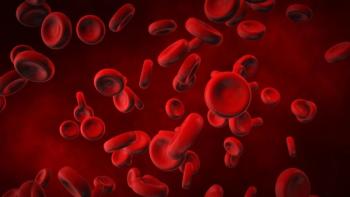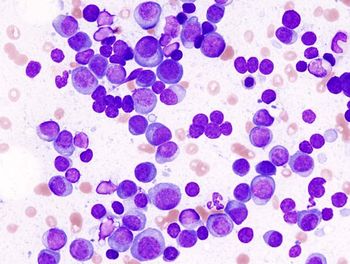
Stereotactic Ablative Body Radiotherapy Produces Acceptable Toxic Effects in Patients With Cancer and Oligometastses
Across various cancer types, stereotactic ablative body radiotherapy was found to be a safe method for treating oligometastes.
Stereotactic ablative body radiotherapy (SABR) demonstrated an acceptable toxicity profile in the single-arm phase 2 SABR-5 trial (NCT02933242) in patients with oligometastases, and could pave the way for future phase 3 studies.
Patients most often received SABR at multiple sites including lung (34%), non-spine bone (25%), spine (16%), lymph nodes (14%), liver (5%), and adrenal (3%). The toxicity profile indicated that patients primarily experienced grade 2 adverse effects (AEs; 14.2%; 95% CI, 10.7%-17.7%) related to SABR, with fewer grade 3 (4.2%; 95% CI, 2.2%-6.2%), grade 4 (0.0%), and grade 5 (0.3%; 95% CI, 0.0%-0.8%) events.
“This relatively large, population-based, phase 2 nonrandomized clinical trial demonstrated a low rate of high-grade toxic effects, which was lower than the a priori cutoffs. The finding of a cumulative incidence of grade 3 to 5 toxic effects less than 5% suggests that SABR in the oligometastatic setting is safe,” the study investigators wrote.
A total of 381 patients were enrolled across 6 cancer centers. At the time of the analysis, the median follow-up was 25 months, during which the median overall survival was not reached. Patients had a median age of 68 years. Overall, 81% of patients had oligometastatic disease and 19% had oligoprogressive disease. The most common cancer types included prostate cancer (32%), colorectal cancer (17%), breast cancer (11%), and lung cancer (9%).
When toxicity was assessed based on site treated with SABR, the most common grade 2 or higher AEs for lung were pain (2%), pneumonitis (2%), or another toxicity (5%). For bone, the most common grade 2 or higher AEs were pain (10%), another type of AE (9%), and rib fracture (2%). For spine, spinal fracture (8%), pain (5%), and other AEs (4%) were most frequent. For lymph node, neuropathy (3%), pain (1%), diarrhea (1%), and other toxicities (9%) were most common. For liver, the most common grade 2 or higher AEs were pain (14%), another type of AE (10%), and rib fracture (3%). Finally, for adrenal, most patients had constipation (13%) and other toxicities (27%).
Patients who received liver (10.3%) and adrenal (6.7%) SABR had more grade 3 or higher AEs, while incidence remained low for other sites. At 2 years, the Kaplan-Meier analysis showed a cumulative incidence of high-grade toxic effects of 4% and 6% 4 years. The cumulative incidence kept increasing year-over-year before stabilizing at year 3.
Grade 2 higher cumulative AEs associated SABR in patients with oligometastatic disease was 18.2% (95% CI, 14.0%-22.5%), and 20.6% (95% CI, 10.0%-30.6%) for oligoprogressive disease. The difference was not deemed statistically significant, however, when using the X2 test, with investigators reporting a rate of 16.7% (95% CI, 12.2%-21.2%) for patients receiving treatment for single metastasis and 22.9% (95% CI, 15.3%-30.5%) for multiple metastases.
There was an even split in the committee, with members believing the single patient death was unlikely, possibly, or probably associated with SABR. The average came out to be possibly associated.
“These results are encouraging that in a program with rigorous peer review, quality assurance, and prioritization of meeting [organ at risk] constraints vs tumor target coverage, SABR is associated with acceptable rates of toxic effects,” concluded investigators.
Reference
Olson R, Jiang W, Liu M, et al. Treatment with stereotactic ablative radiotherapy for up to 5 oligometastases in patients with cancer: primary toxic effect results of the nonrandomized phase 2 SABR-5 clinical trial. JAMA Oncol. Published online September 29, 2022. doi:10.1001/jamaoncol.2022.4394
Newsletter
Stay up to date on recent advances in the multidisciplinary approach to cancer.

















































































